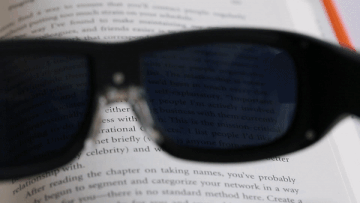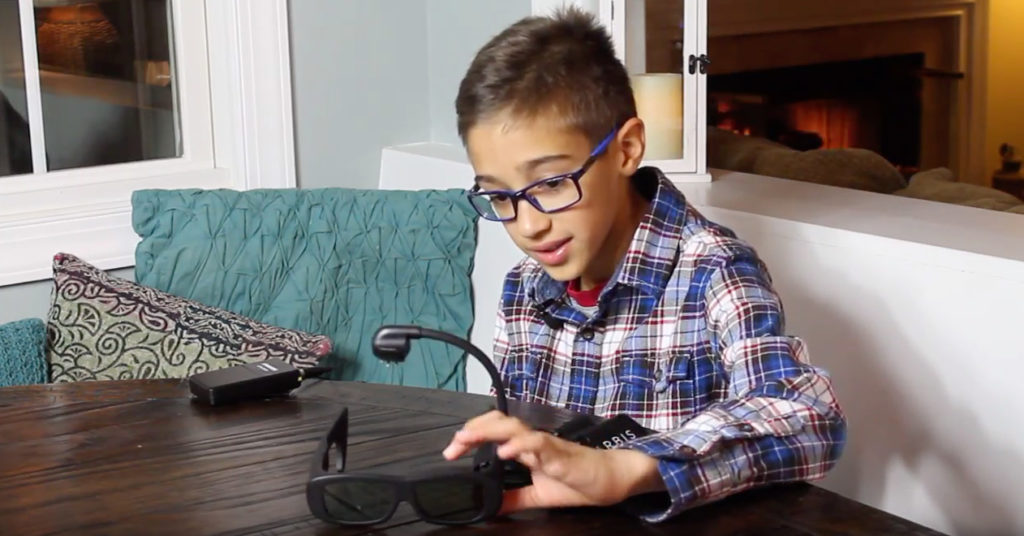Neurofeedback, the technology behind Narbis, has been shown to help the brain learn to function more efficiently, but how does this technology work in smart glasses? And how does it feel for a child to actually use them?
Narbis measures and collects brain wave activity and passes that information through an algorithm. The brain receives immediate feedback by way of its lenses that lighten when it detects that the brain is focused and darken when the wearer shows brain wave activity consistent with being distracted. The brain then learns that the light lenses are a reward, thus encouraging focus.
As Melissa Kapur, whose son Margis is a user of Narbis explains, the glasses teach him how to “learn from how things change in his mind when he is paying attention versus not paying attention.”

Narbis glasses come attached with sensor equipment that measures the wearer’s brain wave activity. Should the user be emitting beta waves—i.e. having brain wave activity consistent with being engaged in a mental task—the lenses will remain clear. When the wearer emits lower frequency, or alpha or theta, waves, the lenses will begin to darken, signaling that it’s time to return to the task at hand.

“The technology is really cool,” says Kapur. “It makes [the wearers] feel like a superhero; a character. They feel like they’re in a science-fiction type of setting.” Beyond giving her son a feeling as if he’s out of this world, in the Kapur household the Narbis glasses have gotten results. Regular use of the Narbis glasses can effectively cut down on household homework time.
Melissa’s son notes that before he started Narbis brain training, getting through two or three pages of homework would have taken him 20 to 30 minutes. Now, that same amount of homework takes him 15 to 20 minutes, he says, with an expression of pride and accomplishment on Margis’ face.
Narbis suggests that people wear the glasses for 15 to 20 minutes at a time, for three times a week. This at-home brain-training schedule might be more manageable for busy households, rather than a once-weekly appointment of 45 minutes to an hour in a clinical setting. Moreover, since the neurofeedback sessions take place at home, that’s time saved from having to travel.

Plus, the glasses economize time on even more levels: As the amount of homework assigned will continue to grow with each new grade in school, this means that much more time saved for family time, practicing musical instruments, or athletic pursuits. This also helps children learn time management skills that will stand to pay off during any post-secondary education and their careers.
Neurofeedback might not be the only answer for attention disorders. But for many families, this convenient, wearable technology could be the easiest way forward. “There were so many avenues we could pursue,” says Melissa. “We wanted to help our son find a way to take cues from things on his own and learn how things change in his mind.”
Thanks to help from Narbis, Melissa’s son has an idea of how it feels to pay attention. And with it, a sense of accomplishment that, like the brain training the glasses provide, is likely to stick for a long time. And that feeling has got to be out of this world.







